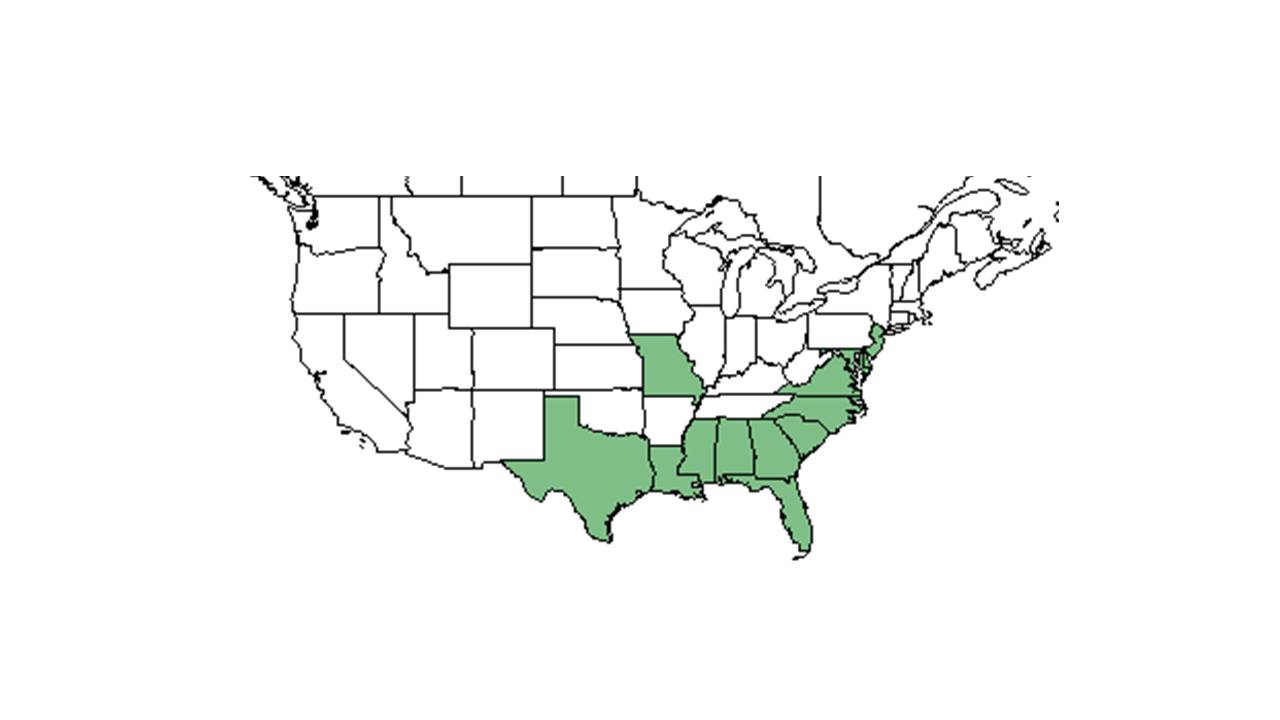Difference between revisions of "Desmodium strictum"
(→Seed bank and germination) |
|||
| Line 35: | Line 35: | ||
===Seed dispersal=== | ===Seed dispersal=== | ||
===Seed bank and germination=== | ===Seed bank and germination=== | ||
| − | Because Desmodium strictum lacks a hard seed coat, it is not capable of forming long-term persistent seed banks, but rather germinates readily within one year following dispersal (Coffey and Kirkman 2006). This suggests that D. strictum does not exhibit the strong physical dormancy attributed to an impermeable seed coat many other legumes do ( | + | Because ''Desmodium strictum'' lacks a hard seed coat, it is not capable of forming long-term persistent seed banks, but rather germinates readily within one year following dispersal (Coffey and Kirkman 2006). This suggests that ''D. strictum'' does not exhibit the strong physical dormancy attributed to an impermeable seed coat that many other legumes do (it lacks a hard seed coat) (Coffey and Kirkman 2006). |
| + | |||
===Fire ecology=== <!--Fire tolerance, fire dependence, adaptive fire responses--> | ===Fire ecology=== <!--Fire tolerance, fire dependence, adaptive fire responses--> | ||
It thrives in frequently burned (1-2 year interval) habitats (Coffey and Kirkman 2006, FSU Herbarium). | It thrives in frequently burned (1-2 year interval) habitats (Coffey and Kirkman 2006, FSU Herbarium). | ||
Revision as of 13:45, 24 September 2015
| Desmodium strictum | |
|---|---|

| |
| Scientific classification | |
| Kingdom: | Plantae |
| Division: | Magnoliophyta - Flowering plants |
| Class: | Magnoliopsida – Dicotyledons |
| Order: | Fabales |
| Family: | Fabaceae ⁄ Leguminosae |
| Genus: | Desmodium |
| Species: | D. strictum |
| Binomial name | |
| Desmodium strictum (Pursh) DC. | |

| |
| Natural range of Desmodium strictum from USDA NRCS Plants Database. | |
Common name: pine barren ticktrefoil
Contents
Taxonomic notes
Description
Distribution
Ecology
Habitat
It occurs throughout the southeastern United States, from Texas to New Jersey (NRCS Plants Database). It thrives in open, frequently burned areas such as longleaf pine and shortleaf pine old field habitats (ultisols) (Coffee and Kirkman 2006, FSU Herbarium). It also occurs in longleaf pine-turkey oak sandhills (entisols), and in longleaf pine and slash pine flatwoods (spodosols) (FSU Herbarium). It occurs in habitats dominated by ultisol soil types with average temperatures from 11 to 27° Celsuis, and with 132 cm of annual rainfall (Coffey and Kirkman 2006). It is seen in habitats with soil types of sandy loam to eroded sandy clayey areas (FSU Herbarium).
Associated species: Other plants that occur in the same area as Desmodium strictum when collected include D. viridiflorum, D. floridanum, D. glabellum, D. canescens, and D. marilandicum (FSU Herbarium).
Phenology
Flowers in from September to October and fruits from September to November (FSU Herbarium).
Seed dispersal
Seed bank and germination
Because Desmodium strictum lacks a hard seed coat, it is not capable of forming long-term persistent seed banks, but rather germinates readily within one year following dispersal (Coffey and Kirkman 2006). This suggests that D. strictum does not exhibit the strong physical dormancy attributed to an impermeable seed coat that many other legumes do (it lacks a hard seed coat) (Coffey and Kirkman 2006).
Fire ecology
It thrives in frequently burned (1-2 year interval) habitats (Coffey and Kirkman 2006, FSU Herbarium).
Pollination
Use by animals
Diseases and parasites
Conservation and Management
Cultivation and restoration
Photo Gallery
References and notes
Coffey, K. L. and L. K. Kirkman (2006). "Seed germination strategies of species with restoration potential in a fire-maintained pine savanna." Natural Areas Journal 26: 289-299.
Florida State University Robert K. Godfrey Herbarium database. URL: http://herbarium.bio.fsu.edu. Last accessed: June 2014. Collectors: L. C. Anderson, R. K. Godfrey, V. Sullivan, J. Wooten, R. Kral, James R. Ray Jr., John Morrill, Robert L. Lazor, Andre F. Clewell, and T. MacClendon. States and Counties: Florida: Bay, Bradford, Franklin, Gadsden, Hernando, Jackson, Leon, Putnam, Taylor, Wakulla, and Walton. Georgia: Baker, Grady, and Thomas.
NRCS Plants Database http://plants.usda.gov/java